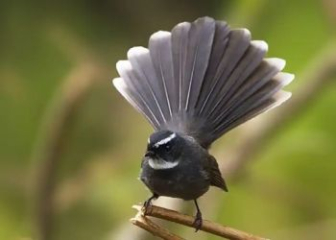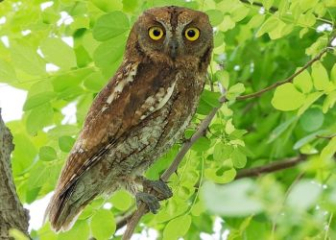Java Sparrow - Detailed Breeding & Care Guide for Beginners
Blog | by
Java sparrow (Padda oryzivora) is a small, lovely, intelligent, agile, adaptable, easy to breed pet bird, very popular in Vietnam.
Java sparrow Finch is always a very familiar name for those who love small, gentle and easy-to-raise pet birds. With a chubby, lovely appearance and friendly, intelligent personality, Java Finch has become a national pet bird of Vietnam.
In today's article, let's learn about the origin, appearance, habits and techniques for raising Java sparrows in the most detailed way with nicebirds !
Information about Java sparrow :
|
Scientific name |
Oryza sativa |
|
Common name |
Java Sparrow, Java Finch, Java Sparrow, Java Rice Bird |
|
Surname |
Estrildidae |
|
Source |
Java Island, Bali, Bawean (Indonesia) |
|
Size |
Length: 13 - 15 cm Weight: 20 - 25g |
|
Lifespan |
7 - 10 years |
Origin and distribution of Java sparrows
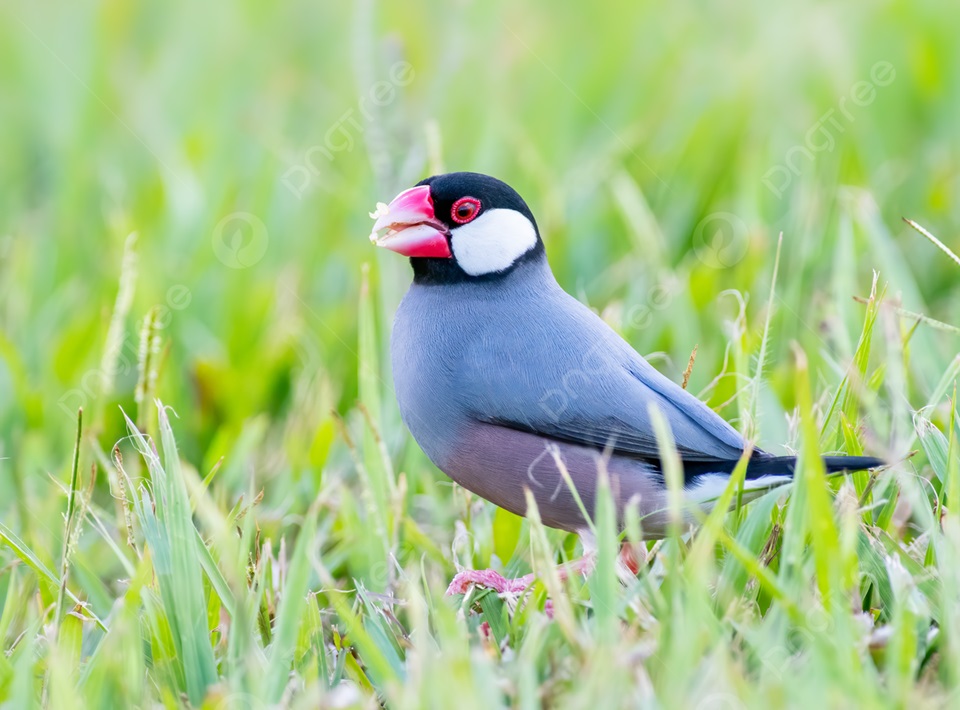
A Java sparrow is perched on a grassy field.
The Java Finch has the scientific name Padda oryzivora, commonly known as the Java Finch, Java Finch, Java Finch. This bird species originates from the large islands of Indonesia, typically:
- Java Island - The place where this bird is named.
- Bali Island
- Bawean Island
They often live in rural areas, rice fields, open forests or residential areas. This is also a long-standing bird species in Indonesia and is closely associated with the country's rice farming tradition - because they often forage in rice fields.
Currently, this bird species has a wide distribution range as follows:
- Natural distribution: Sri Lanka, India, Malaysia, Philippines,...
- Imported, captive, pet birds: Asia, Europe, America and Oceania.
Java sparrow appearance

The adorable look of a Java sparrow.
Below are details about the physical characteristics of the traditional Java sparrow. Let's learn more to easily distinguish this bird species among hundreds of other ornamental birds!
Size & shape :
- Length : 13 - 15 cm (including tail)
- Weight : 20 - 25g
- Shape : Round, compact
Characteristic color :
- The head is velvety black with two large white patches on the cheeks.
- Chest, belly, back and wings are ash grey
- Eyes are round, small, with pink-red rims.
- The beak is pink-red, thick and strong.
- The tail is dark black, short, and slightly curved.
- Nowadays, in addition to the traditional gray Java sparrow, there are many other color variations such as snow white, light cream, metallic silver or chocolate brown,...
Distinguishing between male and female Java sparrows :
- Male Java Sparrow: Usually has a larger, darker beak than the female, sings more, is more active, stands upright, and often puffs out his chest.
- Female Java Sparrow: Paler beak, less vocal, calmer temperament than male.
Habits of the Java sparrow
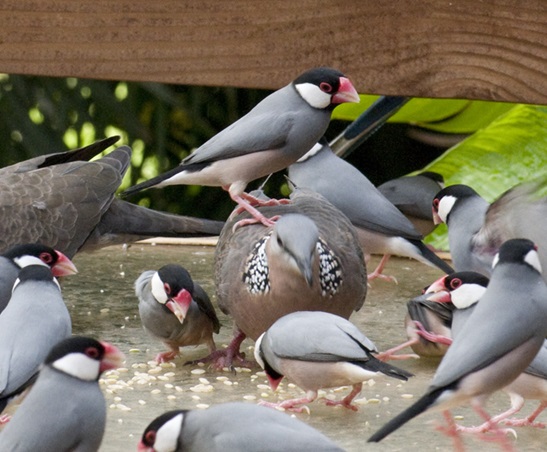
Java sparrows live peacefully with turtle doves.
Java sparrows are considered one of the smallest, most intelligent and organized pet birds. Let's learn more about the habits and behavior of this bird to check it out!
Kind and sociable
Java finches are gentle, rarely aggressive and usually live in small groups, rarely living alone. In addition, they can also live peacefully with many other small bird species if given a large enough space.
Active, mischievous
Java sparrows have a very active and somewhat mischievous personality. When kept in a cage, they will often jump or fly back and forth in the cage, curious about everything around them. If raised from a young age, this bird is very bold and not afraid of humans.
Good reproduction
Java Finches are one of the best breeders of pet birds. Here is some information about their breeding habits:
- Monogamous pairs reproduce.
- The male bird will court the female bird by dancing and chirping.
- Once successfully mated, they will work together to nest, incubate and raise the young.
- Each clutch, the female lays 4-6 eggs, which she incubates for about 2 weeks.
- After hatching, the baby birds will be cared for by both the father and mother birds. After about 3 - 4 weeks, they will leave the nest to become independent.
Well adapted
Java sparrows are very adaptable to their environment, especially in captivity. They do not require much, just a clean, airy place to live, with enough food, and they can live from 7 to 10 years.
Birds are harmful to crops
Despite their cute, adorable appearance and friendly personality, Java sparrows are considered harmful birds to crops in some places. Because they have a habit of gathering in large flocks and then eating ripe rice together.
Java Sparrow Raising Guide from A to Z
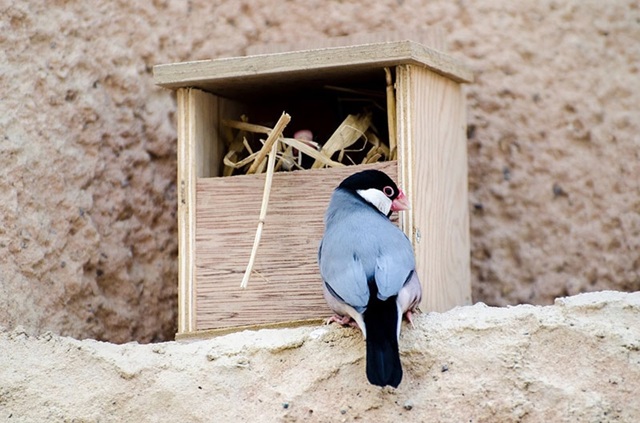
A Java sparrow is standing next to its nest.
If you want to raise these lovely Java sparrows but don't know where to start or what techniques are needed, please refer to the detailed instructions on how to raise Java sparrows that we share below. Guaranteed simple and effective.
Choosing Java sparrows to raise
First, you need to choose healthy Java sparrows so that they can quickly adapt to captivity and live the longest. Please note the following!
- Choose healthy birds with smooth feathers, bright eyes, even beaks, and no defects.
- Birds are active and fly flexibly.
- If breeding, you need to choose a male - female pair.
Prepare cage/cage
Java sparrows love to fly and jump, so when choosing a cage, you need to pay attention to some of the following basic requirements.
- Cage size: 40 x 30 x 30 cm for a pair of birds, if raised in flocks, a larger cage is needed.
- Cage material: Choose wooden, bamboo, or powder coated iron cage.
- Cage decoration: 2 horizontal perches, food trough, water trough, feces tray, if breeding, should have a straw nest or wooden box.
- Cage location: Place in a cool place, not too sunny, avoid direct wind, avoid cats, mice, noise or dust,...
What do Java sparrows eat?
Java sparrows are omnivorous, so when kept in captivity you can feed them a variety of foods such as:
- Main food : Yellow millet, red millet, rice, mixed bird feed (specialized for small pet birds).
- Supplementary food : Chopped green vegetables, crushed boiled eggs, rice worms, small grasshoppers, etc.
- Drinking water : Need to provide enough every day, can add electrolyte water, vitamin C once a week to help increase the bird's resistance.
Breeding Java Finches
If you want to breed Java finches, please pay attention to the following.
- Pairing stage: Put the male and female birds in the same cage and monitor them for about 2 days. When the male bird flirts and flirts and the female bird still responds, the pairing is successful.
- Nesting: Use a ready-made straw nest or a wooden box lined with straw or hay placed in a high corner of the cage.
- Breeding stage: Provide additional soft protein-rich foods such as crushed boiled eggs and mixed bran for Java finches to raise their young.
Hygiene and disease prevention for Java sparrows
To help Java sparrows stay healthy and live long, you need to pay attention to hygiene care and disease prevention for them. Please do the following basics:
Hygiene care :
- Clean food and water troughs regularly and remove leftover food during the day.
- Clean the cage, change the paper lining at the bottom or cut the bottom 2-3 times/week.
- Let the bird bask in the morning sunlight 2-3 times a week, each time for about 15-30 minutes.
- Bathe the bird 3 - 4 times per week.
Optimal disease prevention:
- Observe your Javan sparrow's behavior every day to detect any abnormalities.
- Do not let birds eat spoiled food or moldy seeds.
- Do not expose the cage to strong winds or dampness.
- Add vitamins to drinking water periodically.
Java sparrow price list
Currently, the price of Java sparrows in the Vietnamese bird market fluctuates quite a lot, depending on age, color, rarity and reproductive ability. For more detailed information, you can refer to the following price list!
|
Java sparrow |
Characteristic |
Reference price (VND/piece) |
|
Young Java sparrows raised from a young age |
Birds under 3 months old, easy to tame, easy to raise |
200,000 - 500,000 |
|
Adult Java Finch (gray) |
Bird over 3 months old, can sing |
300,000 - 400,000 |
|
Java Splitter |
Special colors like white, cream, albino,... |
400,000 - 800,000 |
|
Java sparrow reproduction |
1 male - female pair, mated, ready to breed |
800,000 - 1,000,000 VND/pair |
Note:
- Some reputable places to buy Java Sparrows include: Cho Tot, the group "Java Sparrow Vietnam" on Facebook, reputable local bird shops,...
- When buying, you need to observe carefully to choose a healthy bird that is not sick.
- You need to consult and learn from experience before deciding to buy Java sparrows to be able to take the best care of them.
Java Sparrow FAQ
Are Java Finches Easy to Keep?
Java sparrows are very easy to raise, they are gentle, rarely get sick, adapt quickly, have simple food, and are easy to tame.
Do Java sparrows sing?
Yes, but their chirping is not loud, usually a soft, chirping sound, quite pleasant.
How long does it take for Java finches to breed?
Java sparrows can reproduce at about 5 - 6 months old.
Can Java Finches be kept with other birds?
Yes, Java sparrows are very gentle and sociable, so you can raise them with some other small, gentle birds such as budgies, magpies, etc.
Beautiful Java sparrow pictures
Please enjoy the most beautiful and cute Jave sparrow pictures shared below, we guarantee you will fall in love with these lovely birds!
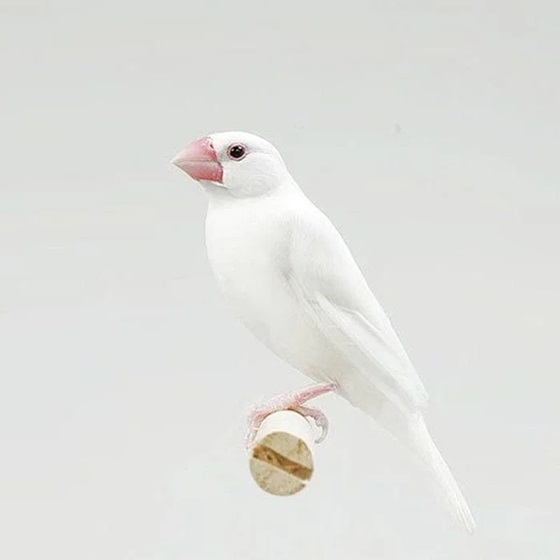
Image of Java sparrow with white feathers.
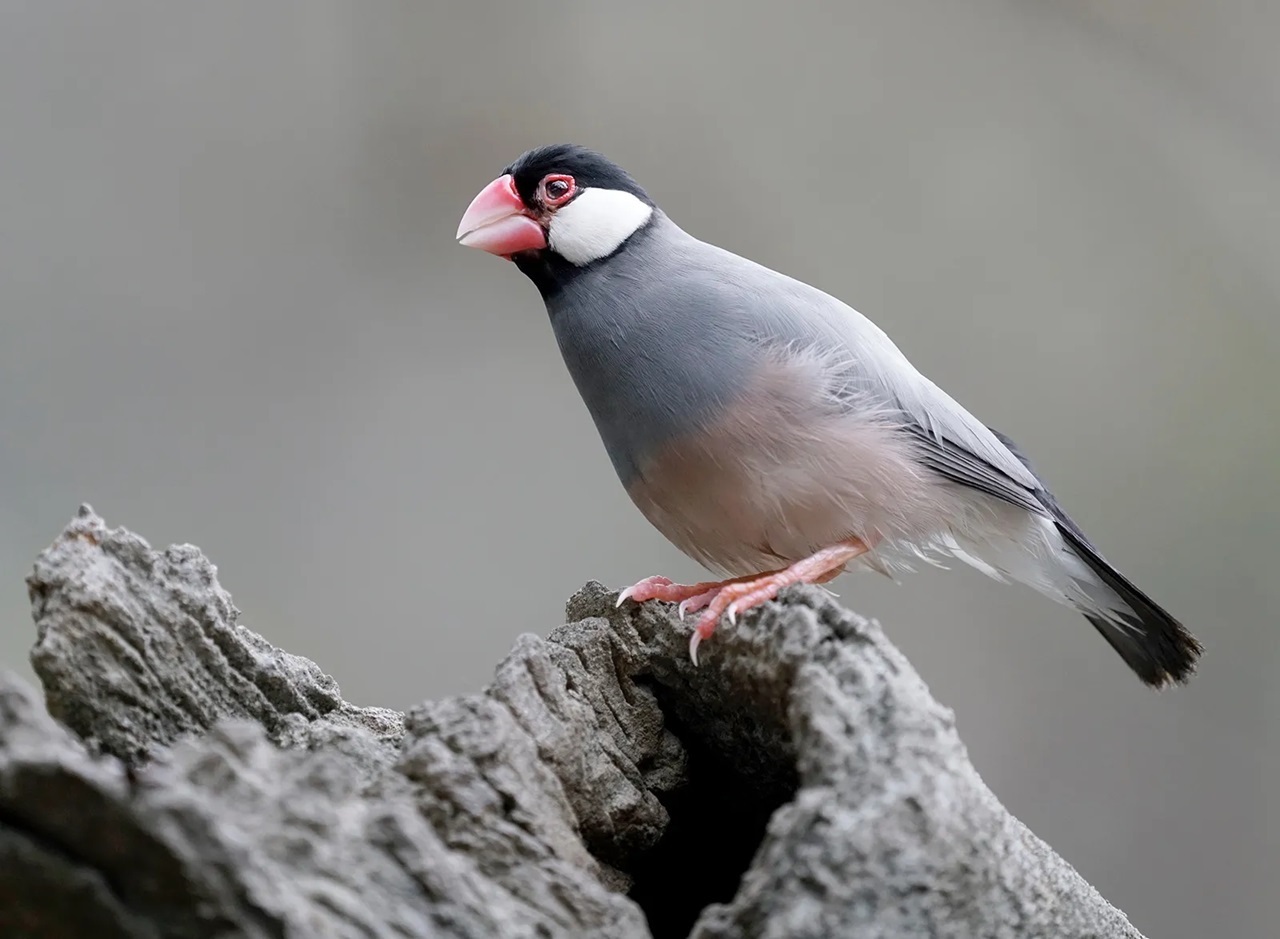
A Java sparrow is perched on a rotten log.
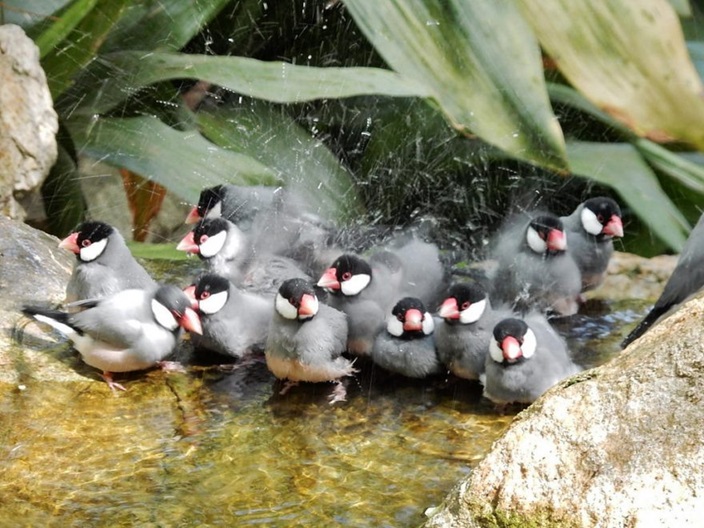
A flock of Java sparrows are bathing in water.
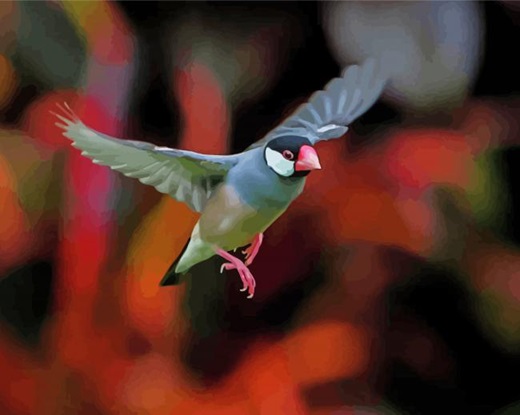
Image of Java sparrow spreading its wings and flying in the sky.

Java sparrows perched on banana leaves.
Above, nicebirds.net has shared detailed information about Java sparrows , hoping you have understood more and know how to take care of this small, active sparrow. If you are a new bird breeder, do not have much experience but still want to own a beautiful, intelligent, and agile pet bird, Java sparrows are the perfect choice.
Don't forget to visit our Blog section every day to read more interesting articles about the world of ornamental birds!

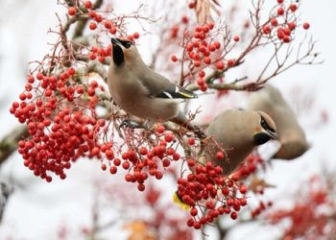

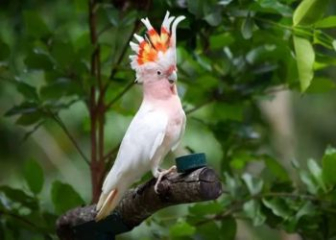
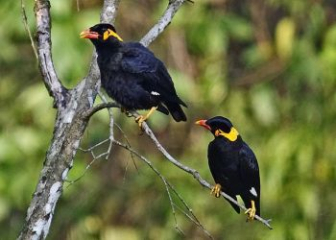
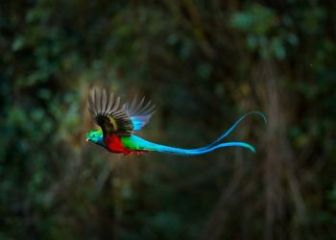





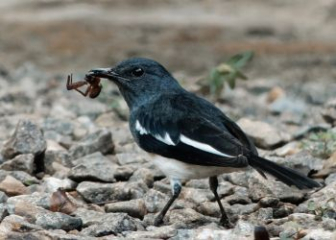
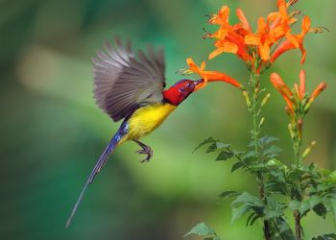


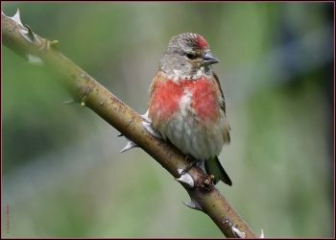
_350x250.jpg)
